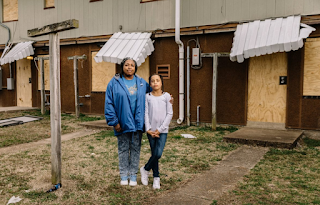Non-metropolitan areas got 64 percent of the money in the last round of a competitive grant program that funds transportation projects, the
Department of Transportation said in
press release. "That’s a reversal from the Obama administration, which in its last year in office provided just $102 million in grants to rural areas. That was just above the 20 percent minimum required by the law that established the program" in 2009, as part of President Obama's economic-recovery bill, Andrew Taylor
reports for
The Associated Press.
 |
| Nebraska Department of Transportation map |
Some of the rural designations on the department's
detailed list of Transportation Investment Generating
Economic Recovery (TIGER) grants are debatable; for example, a $25 million grant for a southern beltway of Lincoln, Neb., is classified as rural, as is a $25 million boost for a connector road in suburban Loudoun County, Virginia, that opponents call "
an outer Beltway" of Washington, D.C. The list says it will provide "safer, more efficient and reliable access to the western, more rural portion of Loudoun County."
Nevertheless, the program "is focused more on projects in rural areas that turned out for Donald Trump in the 2016 election," Taylor writes. "That means more road and rail projects in GOP strongholds such as Idaho, North Dakota, and Oklahoma, and fewer 'greenways,' 'complete streets' and bike lanes."
While the list said 64 percent of the money was going rural, its definition of rural was broad: anything outside an "urbanized area" as defined by the
Census Bureau. That is even broader than the typically broad definition of rural, "non-metropolitan." For example, one of the "rural" grants was $8 million to redo several blocks of a major street in the state capital of Kentucky, Frankfort, population 25,000. A city must have 50,000 people to be the core city of a metropolitan area.
The release said a record $39 million was going to projects on Native American reservations; more than half of that is going to rebuild a road in the
Lower Brule Sioux reservation in South Dakota.
Other than those above, the largest grants listed as rural were $25 million for improvements of a major truck route in Nogales, Ariz.; $17 million for the riverfront in Burlington, Iowa; $16.6 million to finish rebuilding US 212, the Beartooth Highway, in Yellowstone National Park in Wyoming; $16 million to repair the route for
Amtrak's Southwest Chief in Kansas and Colorado; $15 million for climbing lanes on Interstate 15 in Utah; and $13.1 million for streets in Immokalee, Fla.
The largest urban projects were $20 million for a port in Baltimore; $20 million for a freeway in Rhode Island; $19.9 million for a road-railroad grade separation in Raleigh; $18.3 million for a brudge in North Bergen, N.J.; $$13.25 million for a bridge in a suburb of Charleston, S.C.; $13 million for a port in St. Bernard, La.; $12.7 million for the port of Mobile; and $12.6 million for a new bus route in Atlanta.
In 2013 about two-thirds of TIGER funding went to Democratic districts, which tend to be urban. Trump twice sought to eliminate the program, but Congress tripled its budget to $1.5 billion in last month's spending bill, which he signed.
"Of the 41 grants announced by the Trump administration, 25 totaling $271 million were awarded to projects in congressional districts represented by Republicans," Taylor reports. "Districts represented by Democrats garnered 14 projects and $190 million. Two grants worth $25 million went to projects spanning district lines." Not counting those two, GOP districts got 64 percent of the grants and 59 percent of the money; Republicans hold 55 percent of the seats in the House.












